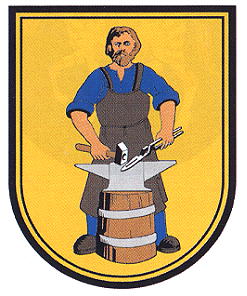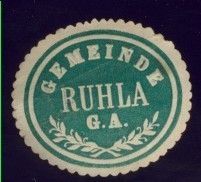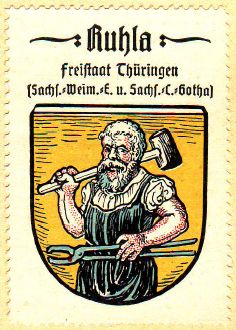Ruhla: Difference between revisions
Jump to navigation
Jump to search
Knorrepoes (talk | contribs) m (Text replace - "The arms in the Kaffee Hag albums +/- 1925 " to "The arms by Hupp in the Kaffee Hag albums +/- 1925 ") |
Knorrepoes (talk | contribs) m (Text replace - "{|width="100%" style="color:black; background-color:#ffffcc;" |width="15%"|50 px|left |width="70%" align="center" |'''Heraldry of the World<br/>Civic heraldry of Germany - [[Deutsche Wappen|Deutsche Wappen (Gemeind) |
||
| Line 1: | Line 1: | ||
{ | {{de}} | ||
'''RUHLA''' | '''RUHLA''' | ||
Revision as of 11:45, 25 January 2015
This page is part of the German heraldry portal |
Heraldry of the World |
|
German heraldry:
|
Selected collector's items from Germany:
|
RUHLA
State : Thüringen
District (Kreis) : Wartburgkreis
Additions : 1994 Kittelsthal, Thal
Origin/meaning
Ruhla was divided in 1640 between Sachsen-Weimar and Sachsen-Gotha. The Sachsen-Weimer part received city rights in 1896 and used as arms a rising sunflower. The Sachsen-Gotha used in its seals a smith, taken from a local legend. When on November 30, 1927 the two cities were again united the common seal showed a smith, but without anvil. The present arms were designed in the middle of the 20th century.
| Seal from around 1900 |
The arms by Hupp in the Kaffee Hag albums +/- 1925 |
Contact and Support
Partners:
Your logo here ?
Contact us
© since 1995, Heraldry of the World, Ralf Hartemink 
Index of the site
Literature : Hupp, O: Kaffee Hag albums, 1920s; Benzing et al, 1984; Ulle, 1998














